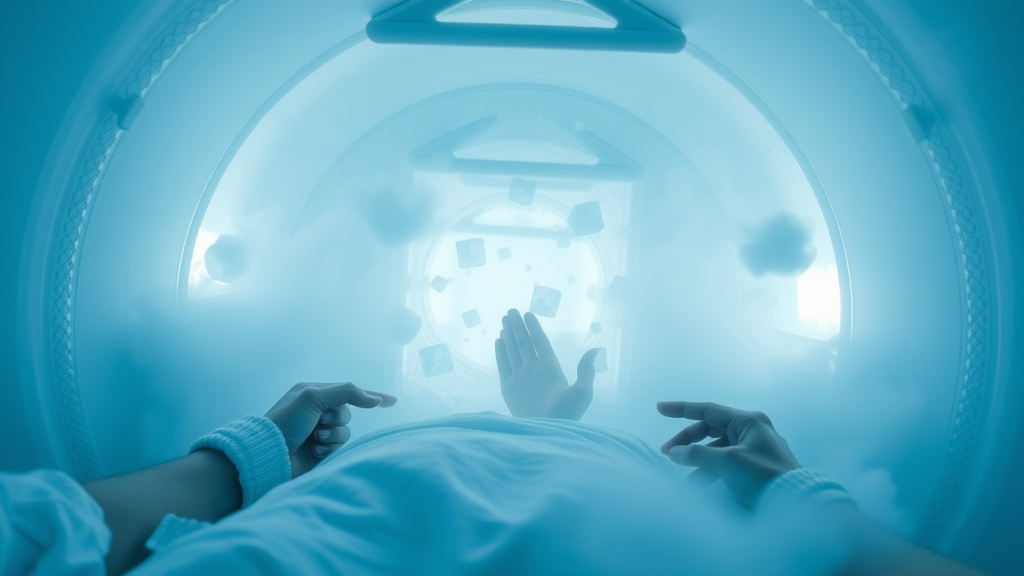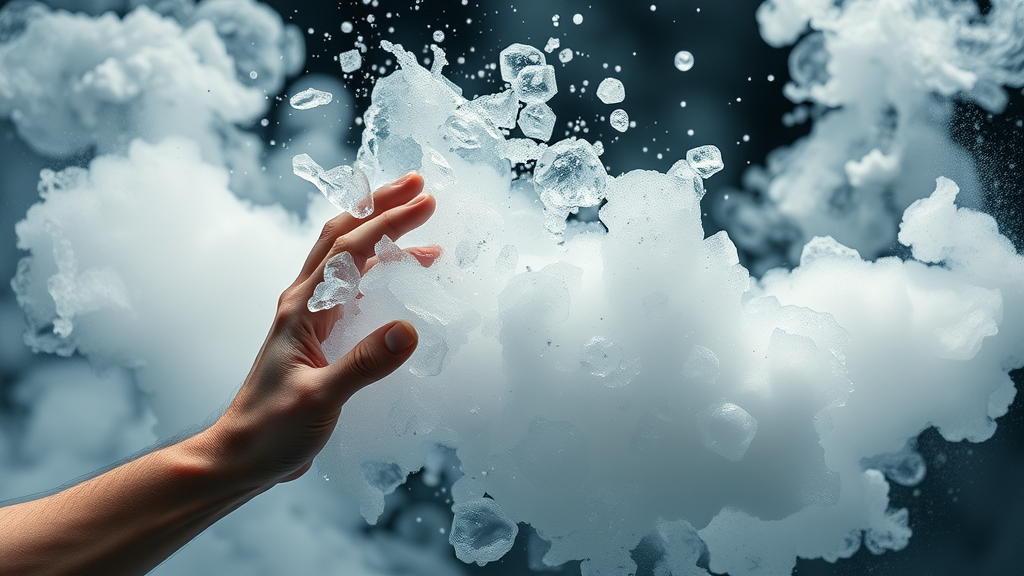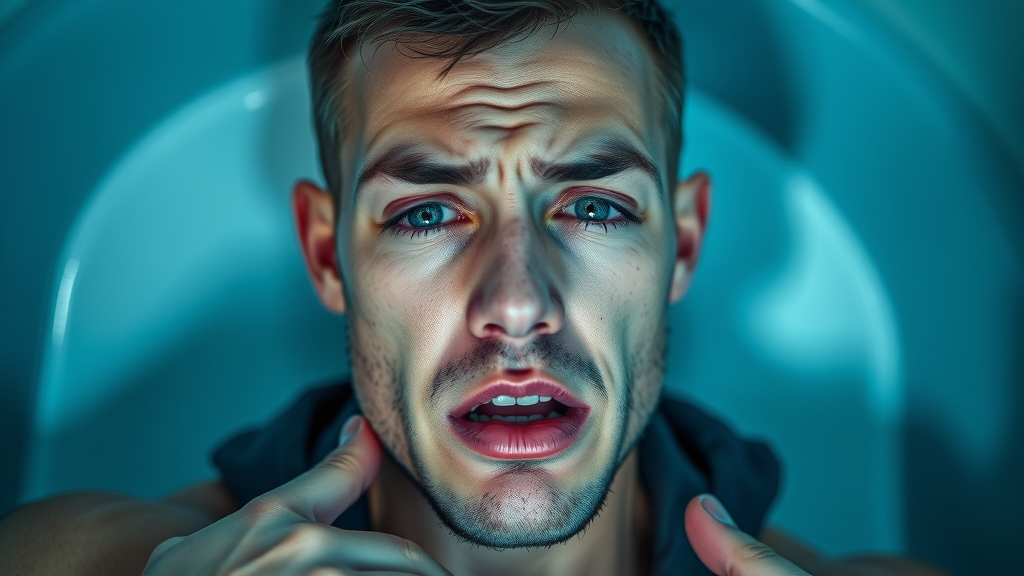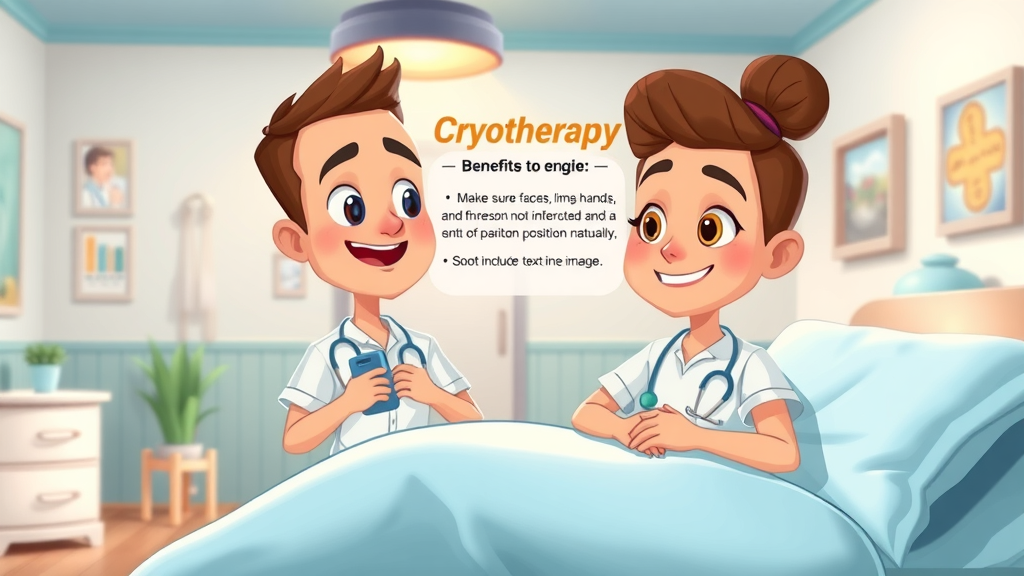Exploring the Extremes: How Cold Is Cryotherapy?
The world of cryotherapy offers an extraordinary experience with temperatures plummeting to levels that seem almost surreal. Within this treatment, temperatures inside the cryotherapy chamber can reach as low as -220 to -300 degrees Fahrenheit. This level of extreme cold is achieved through the application of liquid nitrogen, enveloping the body in cold air that significantly impacts skin temperature.
While the extreme cold might sound daunting, it’s precisely this intense drop in temperature that triggers a cascade of physiological responses aimed at relieving muscle soreness and enhancing recovery. For most users, the actual sensation inside a cryotherapy chamber is more of a short-lived chill than enduring discomfort, lasting just two to three minutes per session.
Understanding Cryotherapy Chamber Temperatures
Inside a cryotherapy chamber, temperatures drastically drop thanks to the infusion of liquid nitrogen into the enclosed space. This creates a surreal environment of swirling fog and cold air. The objective is to induce a significant reduction in surface skin temperature without directly affecting the core body temperature. This unique method generates a robust circulatory and nerve response, offering a host of therapeutic benefits, especially for those experiencing muscle soreness post-exercise.

Comparison with Ice Bath Temperatures
When comparing cryotherapy to traditional ice baths, it's essential to note their distinctive approaches. A typical ice bath usually holds temperatures ranging from 45 to 60 degrees Fahrenheit, utilizing cold water immersion to lower body temperature. While an ice bath involves sustained exposure to cold water, facilitating vasoconstriction and reduced blood flow, cryotherapy offers a quick, albeit more intense, burst of cold air.
The Science Behind Cryotherapy's Extreme Cold
Role of Liquid Nitrogen in Cryotherapy
Liquid nitrogen plays a pivotal role in the cryotherapy process by transforming into nitrogen vapor under low pressure, swiftly generating a cold air environment. This transformation makes it possible to achieve the temperatures necessary for effective cryotherapy treatment. When exposed to extremely cold temperatures, the body reacts by ramping up blood circulation, promoting healing and reducing muscle soreness.

How Cold Air Affects Skin Temperature
The sudden exposure to cold air during cryotherapy dramatically affects skin temperature. This drop stimulates blood vessels constriction, which temporarily limits blood flow to the skin and extremities, conserving core heat. As the session ends, the body undergoes rapid vasodilation, flooding tissues with nutrient-rich blood, significantly aiding in recovery and reducing muscle soreness.
Benefits of Cryotherapy for Muscle Soreness
Managing Delayed Onset Muscle Soreness
Cryotherapy is highly effective in managing delayed onset muscle soreness, often experienced after intense physical activity. The extremely cold conditions help reduce inflammation and pain, providing relief to elite athletes and casual gym-goers alike. By constricting then dilating blood vessels, cryotherapy accelerates the repair process, helping maintain a healthy range of motion.

Body Cryo and Recovery from Sports Activities
The intense session of body cryo is celebrated in the field of sports med for its unparalleled ability to expedite recovery from strenuous activities. The rapid cooling effect from the extreme temperatures helps reduce recovery time, mitigate pain, and prepare the body for subsequent physical demands. It serves as an efficient, non-invasive method to maintain peak performance and agility.
The Cryotherapy Experience: Managing Discomfort
Is Cryotherapy Very Painful?
While cryotherapy's immediate extreme cold might seem intimidating, it's generally not considered painful. Most users describe it as a manageable chill rather than painful cold. The duration is brief, typically around three minutes, allowing guests to endure the session without significant discomfort. Understanding this can alleviate the concerns of first-time participants.

Techniques to Prevent Freezing in the Chamber
To ensure safety and comfort during cryotherapy sessions, several techniques are employed to prevent freezing in the chamber. Participants are provided with protective clothing, covering extremities and sensitive areas. The chamber time is tightly controlled, maintaining a balance between therapeutic need and avoiding potential frostbite risks.
Comparing Cryotherapy and Ice Bath Therapy
Which Is More Effective for Sports Med Use?
In sports med, both cryotherapy and ice bath therapy are recognized for their unique benefits. Cryotherapy is appreciated for its quick treatment time and extensive impact on muscle soreness, while ice baths promote prolonged exposure to cold, aiding in gradual recovery processes. The choice ultimately depends on individual needs, preferences, and specific sports med prescriptions.

Key Differences in Skin Temperature Reaction
The key difference between cryotherapy and ice baths lies in their impact on skin temperature. Cryotherapy induces a rapid, deep cooling of the skin, which triggers a quick circulatory response. In contrast, ice baths offer a sustained cooling that can gradually reduce inflammation and soreness over time.
Tables & Charts
| Therapy Type | Temperature Range (°F) |
|---|---|
| Cryotherapy | -220 to -300 |
| Ice Bath | 45 to 60 |
| Therapy Type | Typical Duration |
|---|---|
| Cryotherapy Session | 2 to 3 minutes |
| Ice Bath Session | 15 to 20 minutes |
Expert Opinions on Cryotherapy
An athlete's perspective on cryotherapy's impact on muscle recovery: "Cryotherapy is a game-changer for recovery, reducing muscle soreness significantly and improving my performance."
A dermatologist's view on skin temperature and cryotherapy: "The rapid cooling effect of cryotherapy is beneficial for the skin’s recovery process, stimulating healthy blood flow and collagen production."
Frequently Asked Questions
How cold is cryotherapy in degrees?
Cryotherapy involves temperatures dropping to an astounding -220 to -300 degrees Fahrenheit, thanks to the use of liquefied nitrogen vapor. Despite such low temperatures, exposure is brief to maximize benefits and minimize risk.
Is cryotherapy very painful?
Typically, cryotherapy is not painful. Users describe the experience as a brief, intense chill. Sessions are designed to last only a few minutes to ensure comfort and safety.
How do you not freeze in cryotherapy?
Participants are instructed to wear protective clothing, covering vulnerable areas like hands, feet, and ears, to prevent frostbite. Sessions are timed meticulously, ensuring that the exposure remains safe and beneficial.

Is cryotherapy colder than ice bath?
Yes, cryotherapy is much colder than an ice bath. While a typical ice bath ranges between 45 and 60 degrees Fahrenheit, cryotherapy plunges to -220 to -300 degrees, providing a more intense but short-lived experience.
Conclusion & Call to Action
Summarizing Key Takeaways about Cryotherapy

Cryotherapy offers a unique benefit for those looking to enhance athletic recovery and manage muscle soreness. With extreme but controlled conditions, it delivers impressive health benefits.
Encouraging Readers to Share Their Experiences and Queries
Have you tried cryotherapy? We'd love to hear about your experiences or answer any further questions you might have. Share your thoughts and queries below!
 Add Row
Add Row  Add Element
Add Element 



Write A Comment